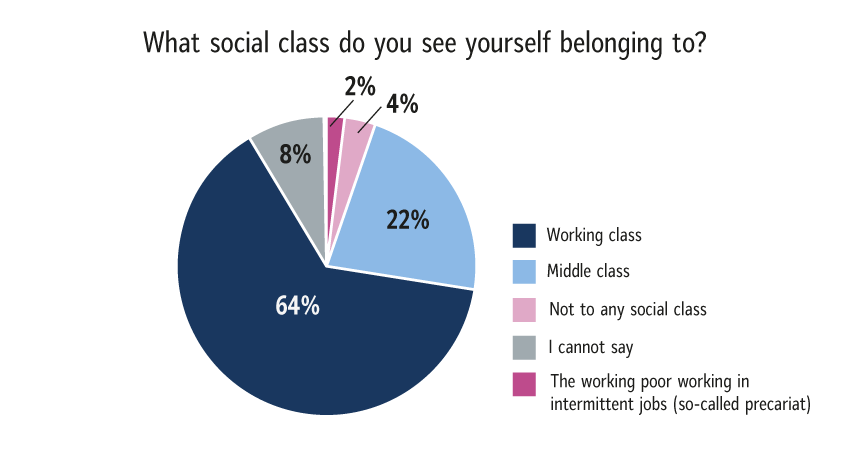Perusduunari muiden joukossa –
4. “We’re all union members here”
There are many reasons to join the Industrial Union. Some members join for ideological reasons and see the work done by the union to be important for society. Many who join a union do so because it is customary. Others might consider how they stand to benefit personally from membership. In this case, the relationship with the union is similar to that of an insurance or a service provider For many, joining a union is a matter of course.
The Industrial Union is trusted for its ability to negotiate collective agreements, and the union’s activities are watched closely. An overwhelming majority of members say that membership of the union provides security and support. The results of the member survey also reveal when and why people choose to join the union. The reasons are often related to looming industrial action, injustices experienced in the workplace, or the uncertainty of working life.
– The employer wasn’t following the collective agreement and we needed to sort matters out, says one middle-aged women in the wood products industry.
– I felt that the situation in the labour market is getting so bad that it’s worth it to join just in case, says one young woman in the metal industry.
The presence of a shop steward at the workplace was seen as an important member benefit by half (49%) of respondents. The shop steward does their job well when things get done at the workplace, grievances are addressed and problems solved. Many chief shop stewards work hard for decades representing the work community with expertise and experience.
Respondents’ family members belonged to a union at a lower percentage than expected. Of all respondents, nearly half (43%) report that their spouse or partner is a trade union member. One in seven (15%) do not have any family members in a trade union, while equally many are unsure.
Studies have shown that civic participation continues to be passed down in the family. This includes voting in elections and being active in associations, for example.

Working class, with a dash of middle class
When we examine the professional organisation of industrial workers, the two key themes that emerge are class identity and political leaning. Class identity is explained partly by income level, but also by ideological background and emotions.
– I have a strong working-class background from my childhood home. My spouse is also working-class but attended higher education and advanced to white-collar jobs. He is probably more middle-class than I am, says one middle-aged woman working in the metal industry.
– My outward appearance points to middle class: single-family home, two cars and a dog, says one middle-aged man working in the wood products industry.
According to the member survey, the majority of Industrial Union members (64%) feel they belong to the working class. The second most common class identity is middle class (22%). In this area, there has been a clear change since the previous member survey in 2020: identification with the working class is down, and the percentage identifying as middle class is up by 4 percentage points.
A poor position in the labour market has a direct impact on how a person feels about their place in society and social class. A person’s position in the labour market is determined by whether or not they are employed and whether they earn a living wage.
Class and political leaning
Election studies show that professional status and identification with the working class no longer go hand in hand among members of SAK unions. The supporters of the Finns Party include voters who are working class in terms of profession but who feel they belong to the middle or upper middle class. This trend is also visible in the Industrial Union’s member survey.
Among the union’s members, voters of traditional working-class parties clearly identify as working class, with 79% of Left Alliance voters and 75% of Social Democrat voters feeling this way. The majority of the supporters of the Finns Party (65%) also identify as working class.
The member survey was conducted in January and February 2023, a few months before the Parliamentary elections. At the time, the most popular parties among members were the Finns Party and the Social Democrats (42% in total). However, the options “I don’t know” and “Prefer not to say” were nearly as common (39% in total). Because of the many uncertainties, the survey’s results can only hint at members’ voting habits in the elections.
